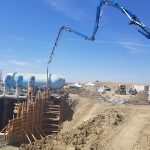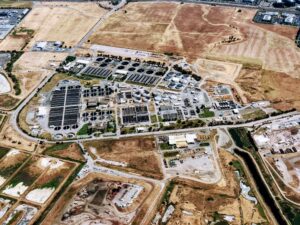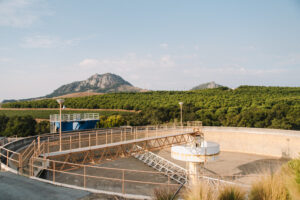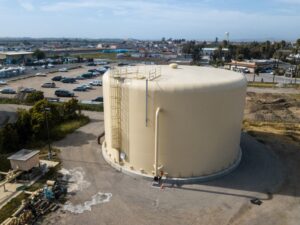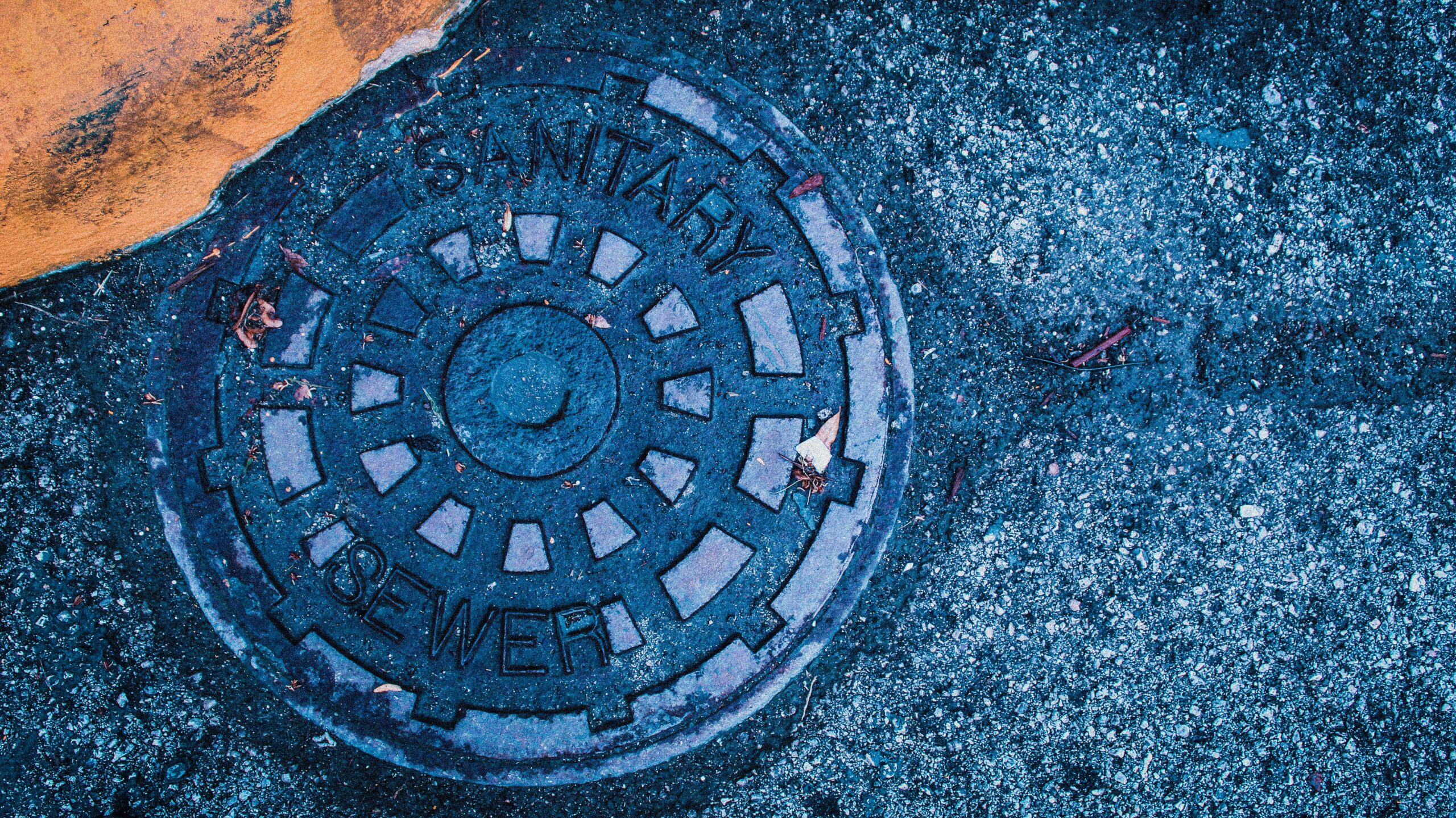
The rehabilitation or replacement of sewer pipes and manholes requires several considerations when planning and designing to ensure reliability and cost efficiency for each projeboy,ct.
Sewer Pipes and Manholes
Wastewater collection systems are mainly made up of buried pipe with manholes and sewer pump stations positioned at low points within the system. Sewer pipe is typically composed of either PVC, reinforced concrete, or HDPE, while manholes are usually concrete and sometimes reinforced plastic or even brick (older systems). There is not much variance in pipe construction, other than material and diameter. Materials standards, such as ASTM and AWWA, provide material and manufacturing requirements. Manholes are used to provide transitions in direction or an opportunity to merge flows.
The main body of manholes (rings) are typically pre-cast concrete and come in standard sizes: 4 to 8 feet in diameter.
Manhole bases can be pre-cast or cast-in-place depending on the needs of the project. Cast-in-place bases help ensure a good fit during construction and ease of flow-through and smoothness to prevent flow interruptions. In addition to concrete, manhole barrels can also be built with HDPE, fiberglass-reinforced plastic, and polymer concrete. Pre-cast concrete is used most often, but due to the corrosive properties of wastewater gases, chemical resistant concrete coatings are recommended. Soil investigations are also done and should include corrosivity testing to determine whether an exterior coating will also be required. The three main coating types we utilize in our projects are epoxy, polyurethane, and PVC liner.
To prevent flow interruptions and provide a water-tight seal, pipe connections should be smooth and include gaskets. If the pipe meets a manhole at a significant height above the channel elevation, an inside drop inlet can be used to prevent turbulence, which can release gases, causing odors and corrosion.
Why Replacement?
The two main reasons for rehabilitation or replacement of sewer pipes and manholes is pipe failure or the need for additional capacity. Pipe failure may be discovered during a condition assessment with evidence of a pipe offset, cracks, or root intrusion. Our clients may need to replace or upgrade their systems if they are seeing capacity issues due to increased population or developments. In some cases, projects are initiated due to replacement cycles within public policy which is intended to prevent future failures.
Planning
Information is vital in the planning stages of these projects to ensure a sustainable project that will serve the communities for the long-term. Our general checklist includes:
- Previous and current Wastewater System Master Plans
- General Plans and/or Planned development information
- A collection system atlas
- Historical wastewater flow rates
- Historical water demands (sometimes used to determine wastewater flows)
- Existing lift station details
- Available inspection reports
- Any known collection system issues
In addition to available plans and information, we also prefer to conduct field visits as in-person observations are a key factor in successful repairs and replacements. Our field visit checklist includes:
- The number of laterals (and approach)
- Consideration of traffic and large commercial, industrial or residential facilities
- Other existing utilities, including water, electrical, fiber optic, storm drains, etc.
- Physical features (trees, streams, etc.)
- Condition of lift stations and manholes (if feasible)
Design
Survey: We partner with a Land Surveyor to develop the topographic map used in our design. Several elements are important when designing sewer pipe and manhole repair and replacement projects:
- Manhole inverts and rim elevations
- Storm drain inverts and rim elevations
- USA – utility paint marks
- Depth-to-top of waterline valves
- Water meters, gas meters, and other above grade evidence of utilities
- Right-of-way, centerline of road
- Observable trench lines
- Overhead electrical
- Trees (trunk diameter, drip line)
- Easements
We also partner with Geotechnical Engineers to obtain geotechnical investigations and reports to understand groundwater elevations, native materials, and potential for soil corrosivity. High groundwater affects dewatering during construction and buoyancy potential for manholes. The Geotechnical Report will also include recommendations regarding pipe bedding and backfill, including whether the native material can be used as trench backfill or if imported material is needed.
The topographic survey and geotechnical report provide important considerations for the sewer replacement design. Planning information, coupled with historical sewer flows, allows for development of future anticipated flows for the sewer pipeline. Once the required flow capacity is determined, the pipeline design considers ground elevations, connecting sewer elevations, minimum and maximum velocities, and maximum pipeline fullness (depth-to-diameter ratio). Together, these factors develop the required pipeline diameter and slopes.
The pipeline alignment layout considers of a number of factors, including property and public right-of-way boundaries, connection points, changes in direction, traffic, and adjacent utilities.
In-place Rehabilitation or Replacement
At times, in-place pipeline rehabilitation or replacement is worth considering. Trenchless techniques can be an efficient alternative to conventional replacement, especially in high-traffic areas. There are three main options to consider: slip-lining, pipe bursting, and cured-in-place pipe.
- Slip-lining pulls a new pipe in through the old pipe, reducing the effective diameter of the pipe. This can be a concern for capacity. However, the flow capacity in an older pipeline can become dramatically lowered if it has become rough from corrosion and/or solids scouring. The roughness of a pipeline slows gravity flow, which reduces the overall capacity within a pipe.
- Pipe bursting is similar to slip lining, but the old pipe is destroyed with a rotating header as the new pipe is pulled in. Geotechnical conditions need to be considered for pipe-bursting, and the technique typically limits the replacement pipe to one, maybe two, standard diameter sizes larger.
- Cured-in-place pipe (CIPP) is a resin material that resembles a sock which is pushed, or blown, through the pipe from one end to another using air, and hardened in place with hot water or steam before cutting off the excess at both ends. CIPP decreases the inner pipe diameter but is often employed for rehabilitation of old pipeline to increase capacity by providing a smoother interior.
MKN has completed a wide range of collection system projects for public and private agencies with proven success and reliability. As we continue to expand our team of knowledgeable and experienced engineers, we are committed to serving our communities through our water, wastewater, and reuse projects.


